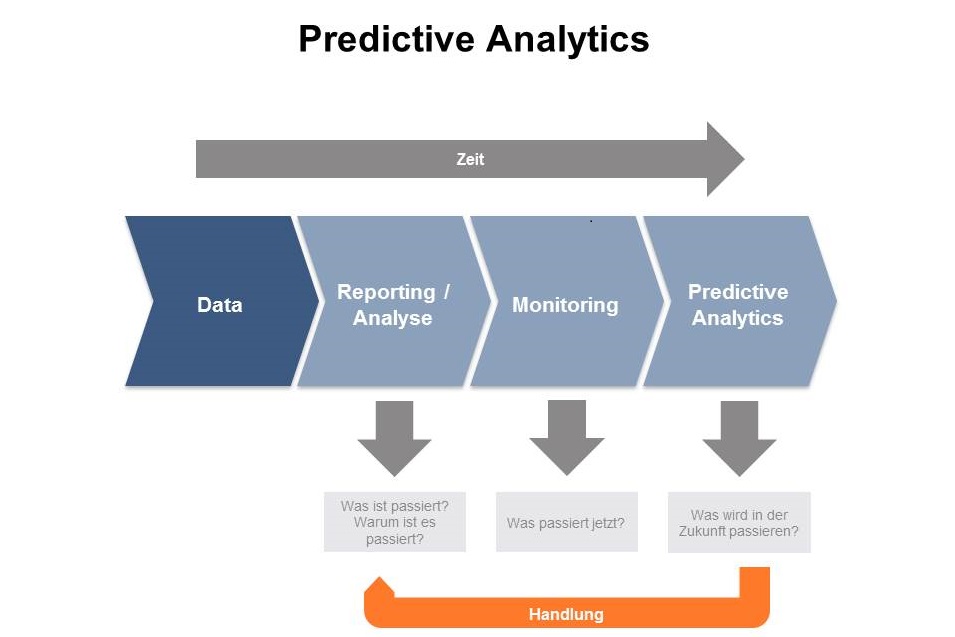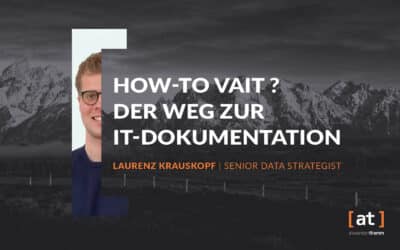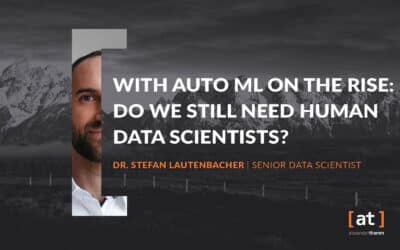Those who already know today what their customers will buy tomorrow have a clear advantage. Data science analyses make such forecasts possible by means of prediction models. One of the basic assumptions is that the more is known about past behaviour, the more accurately statements can be made about future events. Although such forecasts are merely possible scenarios with a certain probability, if they are based on meaningful data, the quality of the decisions based on them can be significantly improved.
Put simply, even weather forecasts can be used to optimise profits: If a sunny weekend is expected, an ice producer will produce more ice to meet the expected demand. Weather also affects other industries such as civil engineering.
Read also our blog article in which we look at the Impact of artificial intelligence on sales forecasts employ.
The situation is very similar for forecasts on the development of share prices, prices for seeds, food or oil on the world market, which have an impact on agriculture, industry or the public sector. To obtain a basis for data-based calculations, forecasting models rely on company data, data from the Customer Relationship Managementmachine data or transaction data.
Inhaltsverzeichnis
Forecasting models: basic functioning
The goal is, Assess future events early and better than the competition. Especially in an increasingly complex business environment, such knowledge is a decisive advantage.
The basic functioning of forecasting models is always similar. After the basic clarification of the question in the company (business processes), three essential steps usually follow one another: After the collection and analysis of the data (reporting/analysis), the comparison with the data from the current actual state (monitoring) and finally the forecast of possible future developments (Predictive analytics).

Forecasting models are usually based on three main steps:
- Reporting/Analysis
- Monitoring
- Predictive Analytics.
In essence, it is about finding patterns in pre-determined sets of data that allow a deeper understanding of past events or past behaviours of customers. These insights are then used as a basis for simulating future behaviour.
The more differentiated a forecasting model is, the more accurate its predictions. That is why it is important to Measure as much relevant data as possible and integrate them into the forecast model. In order to obtain reliable forecasts, it is not always crucial to evaluate as much data as possible - more data does not automatically mean better forecast quality.
Difficulties in the interpretation of forecast models
When using forecasting models, one thing must be clear:Forecasts may sometimes not be accurate.For example, if unforeseen factors or factors that are difficult to measure bring about an unexpected event, the best forecasting model will not help.
In a business context, however, it still makes sense to rely on forecasting models. They are superior to decisions based on heuristic assumptions, gut feeling or intuition. Even if the forecasts cannot be 100 per cent correct, they fulfil the purpose of to safeguard one's own decisions. Particularly in trade, it is worth the effort to compare material and stock levels with the Partial demand progrnosis and to manage logistics in a cost-efficient way.
Machine learning to improve forecasting models
In order to obtain meaningful and realistic forecasts, forecasting models must be regularly reviewed and, if necessary, extended or adapted. Today, forecast models are capable of learning thanks to advances in machine learning. Certain disturbing influences and system uncertainties can thus be identified and regulated. The longer a forecast model is developed and gains experience, the better it becomes.
A common The source of error is the data basis itself. Forecast models can be as good as they are, if the data basis is not correct, the predictions will not be correct either.
A current problem that makes this connection clear are the so-called social bots. These intelligent programmes act in social media as if they were human users. As a result, they falsify social media data to such an extent that predictions based on the analysis of social media behaviour do not match reality. Producing and ensuring high data quality and validity can therefore be of great importance when making predictions.
The growing importance of trends and forecasts in companies
In companies that work in a customer- and market-oriented way, it is crucial to have a good picture of the status quo and future developments in the market. Even if the future cannot be predicted exactly, it is often a decisive advantage to be able to assess future developments better than the competitors.
Forecast models are also an important instrument when it comes to adapting products, offers and services according to trends and customer wishes. Forecasting models can be used in a wide variety of sectors and business areas.
In individual departments such as purchasing, warehousing and logistics, but also all the way up to the executive floors, prognostic knowledge can be Improve decisions and optimise processes.
On closer inspection, forecasting models do not have much to do with looking into a crystal ball. Rather, they are tools that have multiple benefits. They can be used to reduce or optimise inventories, they improve the entire supply chain, offer more security for decision-makers through data-supported foundations or secure competitive advantages because trends are recognised at an early stage.











0 Kommentare